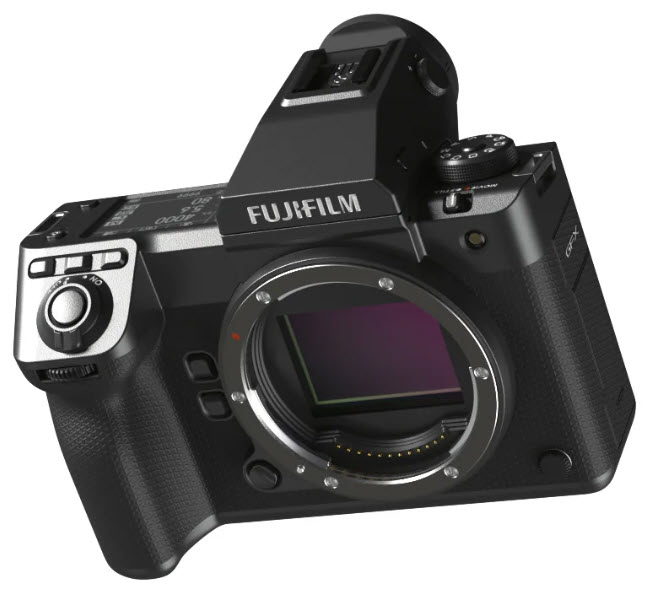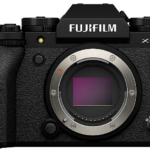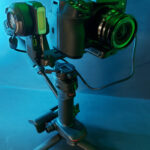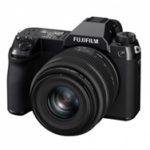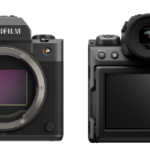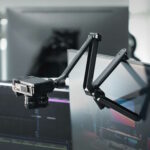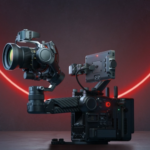Back in the early days when my original “Australian Camcorder” magazine was still distributed on very thin pieces of wood and people actually wanted to to pay money for it (ah the glory days!), the front cover 9 times out of 10 used to feature a very expensive camera / camcorder.
The logic was similar to what car magazines of the day used to do; show some exoticar such as a Ferrari, Lamborghini, Porsche or similar, with the reasoning that people who lusted after such things would buy the magazine. Pretty pictures of nice things I will never have. I suppose Playboy used the same logic.
Which segues very nicely to the fact that if Australian Camcorder was still being distributed on those thin pieces of wood, then the Fujifilm GFX100 II would definitely be on the cover this month.
With the body alone at an RRP of $12,599 this camera is certainly in the Rolls Royce garage of medium format cameras and my review model came with a pair of lenses – an F/4 32-64mm and an F1.7/80mm which each have an RRP of $2749.
So what do you get for over $15K of camera and lens?
Technically
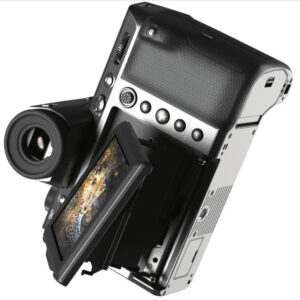
A fair bit of weight and size for starters; the camera body and 32-64mm lens for example weigh nearly 2Kg, so fair to say in my element of motor sport photography allied with a dicky wrist due to Carpal Tunnel surgery, a tripod or monopod is a must.
To give you an idea of the size, the lens mount size of a “traditional” mirrorless type lens, say a Sony E-Mount is 46mm. The Fujifilm GFX100 II is a huge 65mm by comparison.
Obviously sensing the massive size of this camera might be an issue, Fujifilm have applied a texture to the camera called BISHOMAN-TEX that has a lot of grip to it, and this combined with the ergonomics and curves and angles of the body does give you a secure feeling when holding the camera.
The body itself weighs in at just over a kilo, but packed into that is a lot to like starting at 5 axis and 8 stops of in-body stabilisation which I suspect will be put to good use when the camera is handheld.
On the imaging side you get 102 megapixels from the massive approx 44mm x 33mm imaging sensor, with 8 frame per second burst shooting, and 8K 30 frames per second video that supports both 10 and 12 bit RAW at 4:2:2. If you use a compatible ATOMOS HDMI Device, you can record RAW video output from the GFX100 II to 12 bit Apple ProRes at 8K/29.97fps, and with a Blackmagic Design Video Assist, Blackmagic RAW also at 8K/29.97fps.
Fujifilm describes the AF system as “surgically accurate” and in use is very, very fast due to the X-processor system used. It has built in detection for not just faces and eyes, but includes animals, birds, cars, motor bikes, bicycles, aeroplanes and trains plus a “deep learning” AI facility (of course!) and an updated prediction system.
To minimise any viewfinder delay or “blackout”, Fujifilm has increased the buffer memory, and the display frame rate can be upped to around 120 frames per second using what is understandably called Boost mode.
If you plan on using the video mode of the GFX100 II, multiple cine recording formats are also available letting you record in Premista 35mm and anamorphic 35mm. And as befitting a camera of this pedigree, adding a GF to PL adaptor, you then also have access to Fujifilm’s line of Premista and Cabrio cinema optic zoom lenses.
The camera body comes with a removable 9.44 million dot viewfinder which slides into the hot shoe on the top of the camera and a simply brilliant, hinged lift up 3.2-inch (but no rotate) LCD touch screen that even in the brightest sunshine was eminently viewable.
If you want to see all the minutiae of the tech specs, they are here.
Physically

The ergonomics of the GFX100 II are simply, well, beautifully crafted. The top left of the body has the mode selector dial, and the opposite side has a large end very readable LCD panel containing all the camera settings info you need.
Unfortunately, the review unit did not come with any manual and I had to go online to discover specifically what some of the buttons did as they didn’t have labels – one on the top, three front above the shutter release button and two on the front. I guessed they were function buttons, and as it turned out had guessed rightly. Having six means you can customise the camera very easily to suit your own particular workflow of course, or simply retain the defaults (which to find out what they are set to needs firing up the camera and diving into the menu structure or pressing and holding the Display/Back button).
The rear of the body has buttons for Exposure Lock, Menu/OK, Display/Back and Play buttons to the right of the LCD and along the top ridge Drive, Delete, Autofocus On and Focus Mode selection as well as the rear command dial.
The Movie/Selection is in front of the mode dial and under the shutter release is a front control wheel.
Compared to some cameras, this is a minimal setup but for me, it adds to the beauty of what is a very complex piece of equipment as it is very quick to pick up how to make the GFX100 II do its thing, and is not at all intimidating.
For connectivity, under a weatherproof seal on the left side of the body are ports for a microphone also doubling as a remote shutter release, full size type A HDMI and USB -C. The opposite side equivalent has a type B CFexpress card and an SD card slot.
Proof in the pudding

Crab Park, Australind Western Australia
Of course, all the technical doohickeys and highest specifications available are all for diddlysquat if either of two things happen; one the camera takes terrible images or secondly, it is in the hands of someone who has no clue.
For number one, thankfully this is not the case as it takes exquisite imagery – both still and video – and the functionality of the GFX100 II means you can unleash your creative juices and really go to town. I had some nice success playing with this camera, but no doubt an expert would get far, far better results than I. I’m thinking people of the calibre of Ross Gibb and Peter Aitchison here.
The second factor is not totally impossible of course as anyone with enough money can buy whatever they like and try to be an expert or look the part. We’ve all met one or two at some point. But to give someone a camera such as this who would put it on A for auto and then just point and shoot would be a travesty and should be a criminal offence.
If you are in the market for a medium format camera, and do not yet have an investment in other gear that would sway you to a different brand, I’d strongly recommend checking the Fujifilm GFX100 II out. It is not a camera for the masses by any stretch of the imagniation, and not even a camera for all pros, but in the right hands for the right jobs, as I say throughout my little review here, it is a superlative beast indeed.
Footnote: Sadly the image gets quite compressed in the browser and do not givejustice. The original as a JPEG can be downloaded here.

